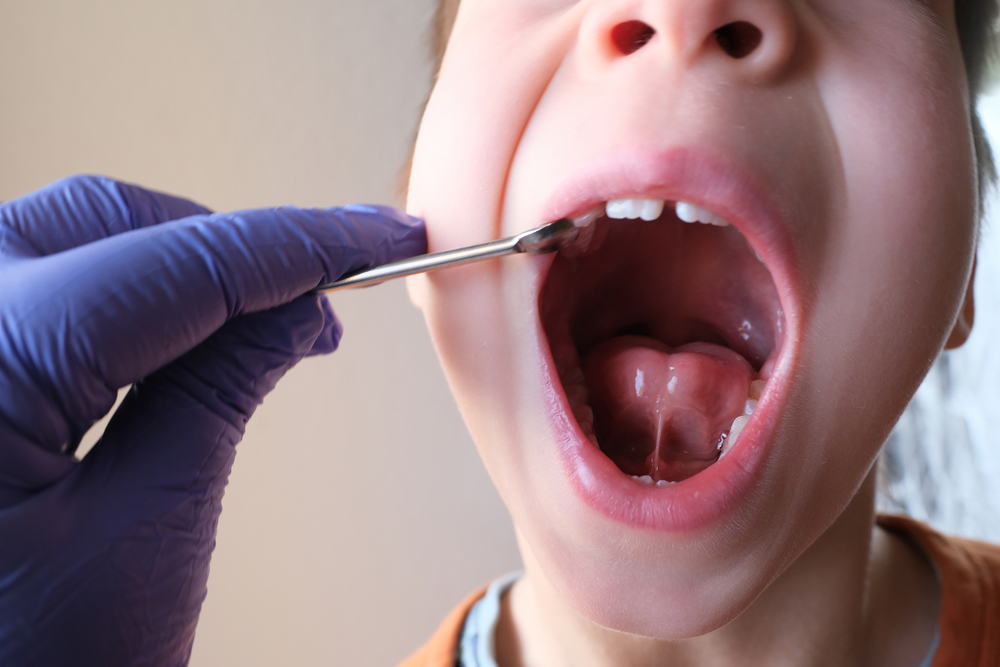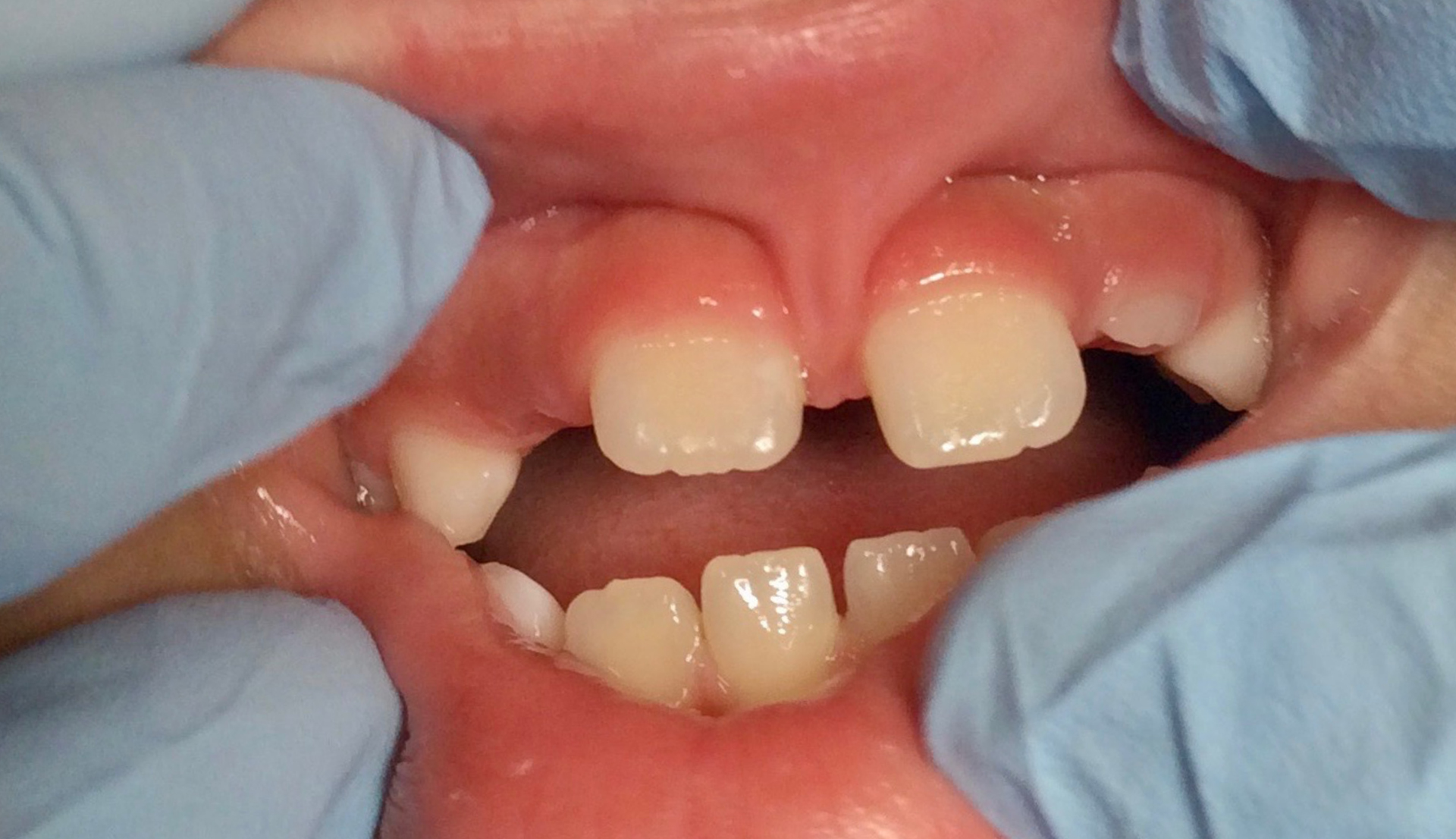The Benefits of Lip and Tongue Tie Treatment for Babies and Children
Could a simple procedure make feeding or speaking easier for your child? For many parents who struggle with breastfeeding difficulties or notice their child encountering speech or oral health challenges, the cause might be closer than they think. Tongue and lip ties, though small in size, can have significant impacts on a child’s ability to feed, grow, and communicate effectively.
Tongue and lip ties occur when the connective tissue (known as the frenulum) under the tongue or upper lip is too tight, restricting mobility. If left untreated, these conditions can lead to complications in feeding, speech development, and oral health. The good news? These issues can often be addressed with a straightforward lip and tongue tie treatment.
This blog will explore what tongue and lip ties are, the signs to watch for in babies and children, and the life-changing benefits of addressing these early.
What Are Tongue and Lip Ties?
Tongue and lip ties, while not uncommon, are often overlooked until their symptoms become pronounced.
Tongue Tie (Ankyloglossia):
Occurs when the band of tissue connecting the bottom of the tongue to the floor of the mouth is too tight or short. This restricts tongue movement, impacting functions such as feeding or speech.
Lip Tie:
Occurs when the tissue connecting the upper lip to the upper gums is overly tight, making it difficult for the lip to curl outward or move freely. This can interfere with proper latching during breastfeeding and affect oral hygiene as the child grows.
To picture it more clearly, imagine trying to reach the roof of your mouth with your tongue, but being unable to do so because the tissue under your tongue is too tight. Similarly, think about struggling to brush or floss your upper teeth because your lip can’t lift adequately. These restrictions can lead to both immediate and long-term challenges.

Lip & Tongue Tie Issue Treatment
How to Identify Signs of Tongue and Lip Ties in Babies and Children
Tongue and lip ties can sometimes go unnoticed but may have a significant impact on a child’s feeding, speech, and overall oral health. Recognizing the signs early allows parents to seek timely intervention and avoid potential complications. Here’s a guide to understanding how these conditions can manifest in both babies and older children.
Symptoms in Babies
Babies with tongue or lip ties often experience feeding difficulties that can be both frustrating for them and overwhelming for parents. Watch out for these signs during your baby’s feeding sessions:
- Difficulty Latching: Struggling to latch properly while breastfeeding, often slipping off the breast.
- Fussiness or Frustration: Irritability during feeds due to ineffective milk transfer.
- Maternal Discomfort: Shallow latch causing pain or soreness for the breastfeeding parent.
- Frequent Feeds: Needing to feed more often since they cannot extract milk efficiently.
- Clicking or Gulping Sounds: Swallowing air while feeding, which can also lead to excessive gassiness or reflux symptoms.
- Poor Weight Gain: Trouble gaining weight or growing at the expected rate, a sign of inadequate nutrition intake.
Symptoms in Older Children
For older children, the effects of tongue or lip ties often extend beyond infancy and can impact daily activities, development, and even self-esteem. Look for these indicators:
- Speech Challenges: Difficulty articulating certain sounds, like “r,” “l,” or “th.” Speech delays may also be present.
- Eating Difficulties: Trouble chewing or avoiding textured foods altogether, preferring softer options instead.
- Oral Hygiene Struggles: Challenges with brushing or flossing teeth effectively, which may increase the risk of cavities or gum issues.
- Dental Issues: Gaps between the front teeth, especially with severe lip ties.
- Mouth Breathing: Habitual open-mouth breathing, which can affect facial development over time.
- Social Concerns: Self-consciousness about eating or speaking in public, impacting confidence and participation.
Addressing these symptoms early can prevent long-term issues like speech impediments, feeding aversions, or more complex dental interventions later. Just as diet impacts oral health, as highlighted in our guide on ensuring strong, healthy teeth, early intervention for tongue and lip ties can set the foundation for your child’s well-being.
How Tongue and Lip Ties Impact Daily Life
The complications of tongue and lip ties go beyond feeding concerns in infancy. These conditions can affect a child’s daily life and long-term well-being.
Feeding Challenges:
For infants, tongue and lip ties can make breastfeeding particularly stressful, both for mother and baby. Babies may struggle to extract milk efficiently, leaving them hungry and frustrated. These struggles may lead mothers to prematurely transition to bottle feeding or face feelings of guilt when breastfeeding goals aren’t met.
Speech and Language Development:
As children grow, restricted tongue or lip movement can affect their ability to articulate certain sounds. Speech development delays may require therapy and can affect their confidence in communicating with others.
Oral Health Issues:
Tongue and lip ties can interfere with maintaining oral hygiene. An inability to clear food particles from the teeth or properly position the tongue during swallowing may increase the risk of cavities, gum issues, and misaligned teeth.
Emotional and Social Challenges:
The inability to eat certain foods, pronounce words clearly, or participate fully in social settings can erode a child’s confidence over time. This can influence their emotional well-being and interactions with peers.
The Benefits of Lip and Tongue Tie Treatment
Fortunately, addressing tongue and lip ties early can prevent or resolve many of these challenges. Here’s how treatment can benefit a child and their family:
Immediate Feeding Benefits:
For infants, tongue and lip tie treatment can significantly improve breastfeeding. Latching becomes easier, milk transfer is more efficient, and feeds become less stressful for both baby and parent. Many mothers report reduced pain and an overall better breastfeeding experience after the procedure.
Enhanced Speech Outcomes:
For older children, releasing tongue and lip ties can complement speech therapy by enabling a greater range of motion for pronunciation. Therapists often report faster progress and greater results when a tie is addressed.
Improved Oral Health:
Treating lip and tongue ties can promote better oral mobility, making it easier to maintain oral hygiene. Closing gaps between teeth caused by severe lip ties or reducing the likelihood of cavities are additional benefits.
Emotional and Developmental Growth:
When children no longer struggle with feeding or speech, their confidence blossoms. They can eat freely, communicate more effectively, and participate in social events without fear of judgment or embarrassment.

Lip & Tongue Tie Treatment Expert
Treatment Options for Tongue and Lip Ties
When untreated, tongue and lip ties can significantly impact a child’s feeding, speech, and overall oral health. Fortunately, modern medicine provides highly effective and minimally invasive solutions that offer relief for both children and parents.
What Are the Treatment Options?
Laser Frenectomy
This advanced procedure uses a laser to precisely release the tight tissue. The laser reduces discomfort, limits bleeding, and promotes faster healing. It’s a highly recommended option due to its precision and ability to deliver quick results, often providing immediate improvement in feeding or speech.
Surgical Release
A traditional option, surgical release involves a small incision made by a skilled specialist to revise the tie. While slightly more invasive than the laser, this technique is still a reliable and safe method that delivers effective results.
Both of these procedures are typically completed in just a few minutes and can immediately improve a child’s ability to latch, feed, or speak with more ease.
Why Are These Procedures Safe?
It’s entirely natural for parents to have concerns about their child undergoing a medical procedure. Rest assured, both laser and surgical options are performed by experienced specialists who are trained to minimize risks while ensuring the child’s comfort. Most children experience only mild discomfort, and downtime is kept to a minimum.
Here’s what sets these treatments apart in terms of safety and effectiveness:
- Expert Care: Specialists with expertise in pediatrics perform these procedures, ensuring high precision.
- Quick Recovery: Children can return to normal feeding or speaking activities within just a few days.
- Minimal Risks: Advanced tools and techniques have made these approaches less invasive and more comfortable for young patients.
When Should You Seek Treatment?
Early detection and treatment of tongue and lip ties can help avoid long-term complications. But when should parents act?
Signs to Watch for:
- Difficulty feeding—for infants, this includes struggles with latching or slow weight gain.
- Speech delays or concerns raised by early childhood educators or healthcare providers.
- Gaps between teeth that don’t close naturally over time.
If you suspect your child may have a tongue or lip tie, it’s wise to consult with a pediatric dentist, an ENT specialist, or a lactation consultant for an evaluation. Early intervention can yield the best results for your child’s development.
Supporting Your Child Post-Treatment
After treatment, proper aftercare is crucial to ensure optimal results. Here’s how you can support your child:
Post-Treatment Tips:
- Stretching Exercises: Follow your provider’s guidance on gentle stretches to prevent reattachment.
- Breastfeeding Support: If breastfeeding, seek help from a lactation consultant to ensure proper latching post-procedure.
- Speech Therapy: If speech delays were present, working with a therapist can help your child maximize the benefits of increased tongue or lip mobility.
Recovery is often quick, and with appropriate aftercare, your child should experience significant improvements in feeding, speech, and oral health.

Lips Tie Issue Treatment
How Pediatric Dentists Provide the Best Care
When it comes to your child’s oral health, pediatric dentists, such as the skilled team at Evergreen Pediatric Dentistry, play a crucial role in creating a strong foundation for lifelong wellness. These professionals undergo specialized training that goes above and beyond general dentistry to address the unique needs of children—from newborns to teens.
One of the key areas pediatric dentists focus on is developmental conditions such as tongue ties and lip ties. These issues, if left untreated, can significantly affect a child’s ability to feed, speak, and maintain proper oral hygiene. At Evergreen Pediatric Dentistry, treatment options like laser frenectomy or surgical release ensure gentle, efficient, and effective care, helping children and parents alike find relief.
But that’s not all. Pediatric dentists understand that dental visits can be intimidating for kids. With expertise in child behavior, they create comforting, child-friendly environments that are designed to reduce anxiety for both children and their parents. From bright, calming office spaces to compassionate, engaging communication, they turn dental visits into a positive experience.
Helping Your Child Thrive with Early Treatment
Addressing tongue and lip ties early can lead to life-changing benefits for both children and their families. From improved feeding and speech development to better oral health and confidence, the outcomes are overwhelmingly positive. If you suspect your baby or child may have a tie, don’t hesitate to seek professional advice and take the first step toward a happier, healthier future for your child.
Remember, the earlier the intervention, the better the results. Consult a specialist today to assess and address potential concerns.
Evergreen Pediatric & Airway Dentistry
Dr. Susan Kim
12910 Totem Lake Blvd NE #103
Kirkland, WA 98034
(425) 814-3196
Get Directions on Google Maps
evergreenkidsdentist.com


